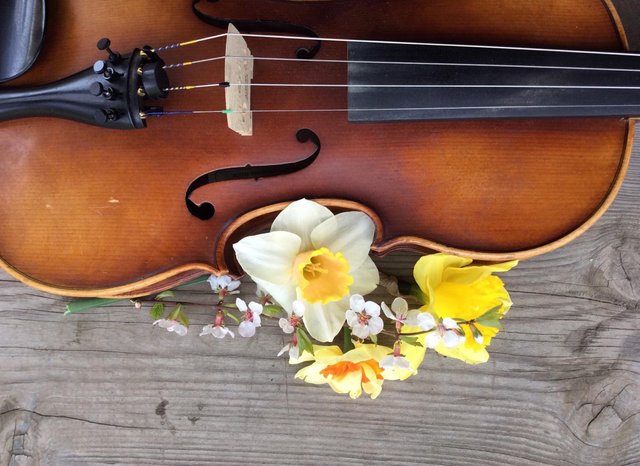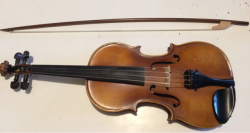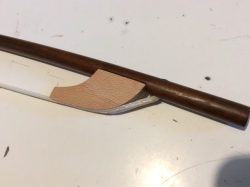Mid-East Rebec Bow Review

Over the last couple years, I’ve been diving into the “Performance” book Jeffrey Kite-Powell, cutting right to the chase and reading the chapters that immediately address my needs and goals. In chapter 14, written by David Douglass, the author discusses the Renaissance violin in detail, both in taxonomy and technique. I have been much pleased with the discussion on how to make Renaissance and Early music more accessible for the modern player by judicious application of stance changes and basic gear changes.

(From Google images)
One of these changes was to trade out your modern bow for a Renaissance-style one.
An afternoon spent Googling had me really wondering whether that was a financially feasible option. I am a musician on a budget, a musician with a family and mundane life priorities (aka. bills), and while I love my gear, I find it a little hard to justify spending close to $4000 for a hand-made custom Renaissance bow (because they don’t grow on trees… Well, kinda, but you catch my drift). About the time I was getting discouraged with what was available (the author’s other suggestion was gut strings, and I haven’t delved into that yet), I happened across a basic manufacturer of early and oddball instruments called Mid-East Music. And Lo! They make rebecs, an earlier precursor to the violin.

(My fiddle, Finch, and the early bow)
I was intrigued, so I kept looking, and sure enough, they sold replacement bows for the rebec.
Now while the rebec is an earlier instrument than the violin, the style of bow didn’t actually change that much until toward the end of the 16th century – at which point, the changes really kind of take off as we move into Baroque and then full-on classical music. Medieval and Renaissance bows were very simple, horsehair strung between the ends of a stick until it created a convex look, and a wooden frog held in place by friction and the player’s grip for adjusting the tension on the hair. (So simple, in fact, I am interested in building my own at some point for A&S, but that is a whole other post.) According to Douglass, the shape and length of the Renaissance bow is critical for interpreting the music of the time – bows grew in length through the 16th century on, and having a longer bow changes the capacity for snappy articulation (just consider how many folk fiddlers grip their modern bows well away from the frog? Same principle.), especially within the realm of dance music.

(A close-up of the frog)
So. The Mid-East rebec bow. At a price point of right around $30, you can’t really beat it for an experiment in recreating the sound and style of Renaissance music, and I ordered it.
The rebec bow is not as historically accurate as I would like: it has synthetic bow hair which is glued into each end (rather than knotted or held with other friction means), and the frog is stationary rather than free (not exactly a big deal, considering synthetic hair won’t change tension in humidity or temperature). BUT the dimensions are pretty accurate to extant examples at 26" long with roughly 23" of playable surface, and it is stunningly light and quick in the hand.
And bonus! It still fits in my violin case!
Over the last year, it has performed admirably with lots of use. I haven’t lost many hairs off it, and it gives a great approximation of the less robust tone of medieval and renaissance fiddles, especially when paired with a Tourte mute (roughly $0.98USD on Amazon).
So for the burgeoning Early musician, especially those of us on a budget, I’d call the Mid-East Rebec bow a win.
(A repost from my Tumblr, Sept. 2016, with updates!)